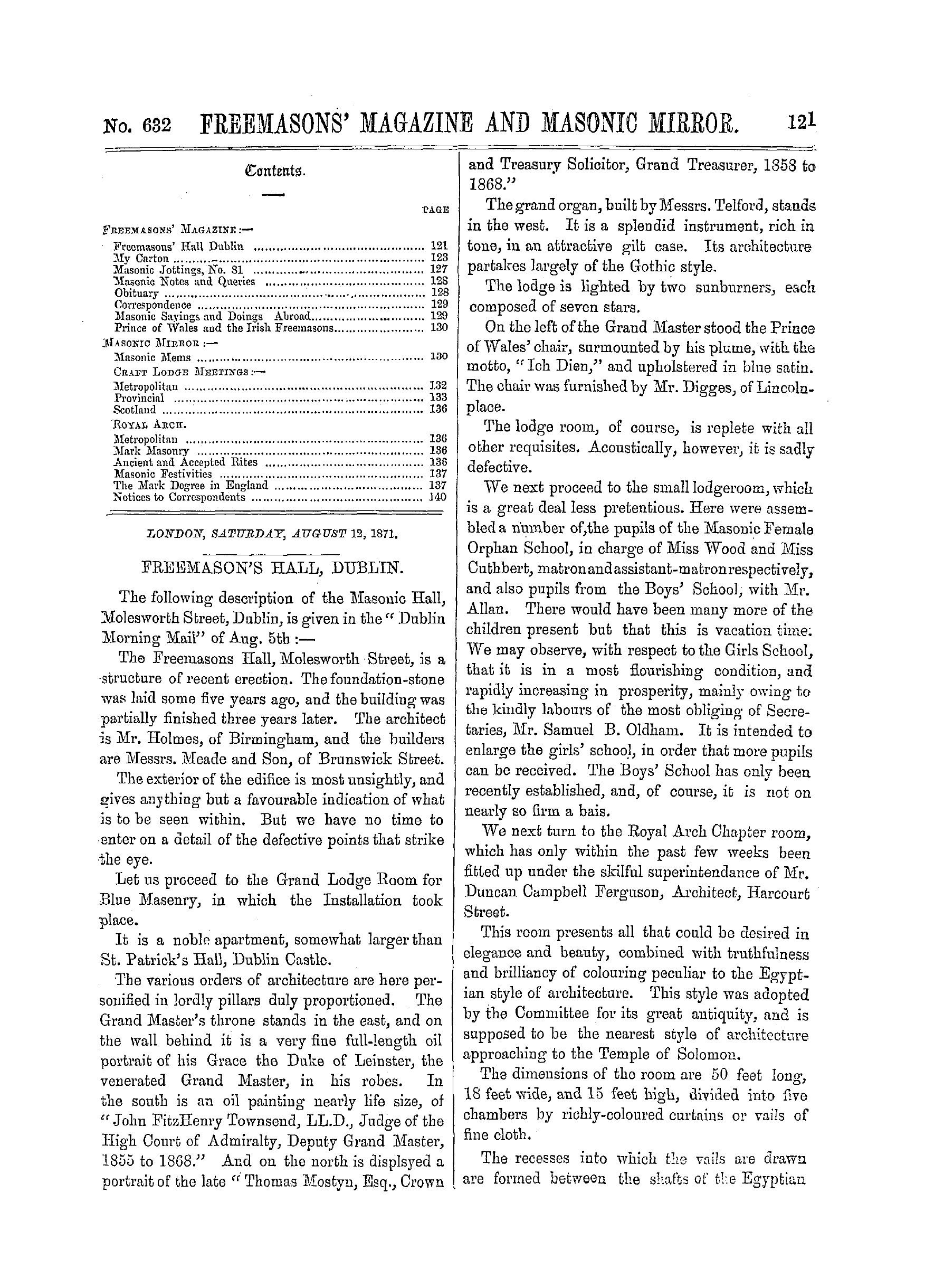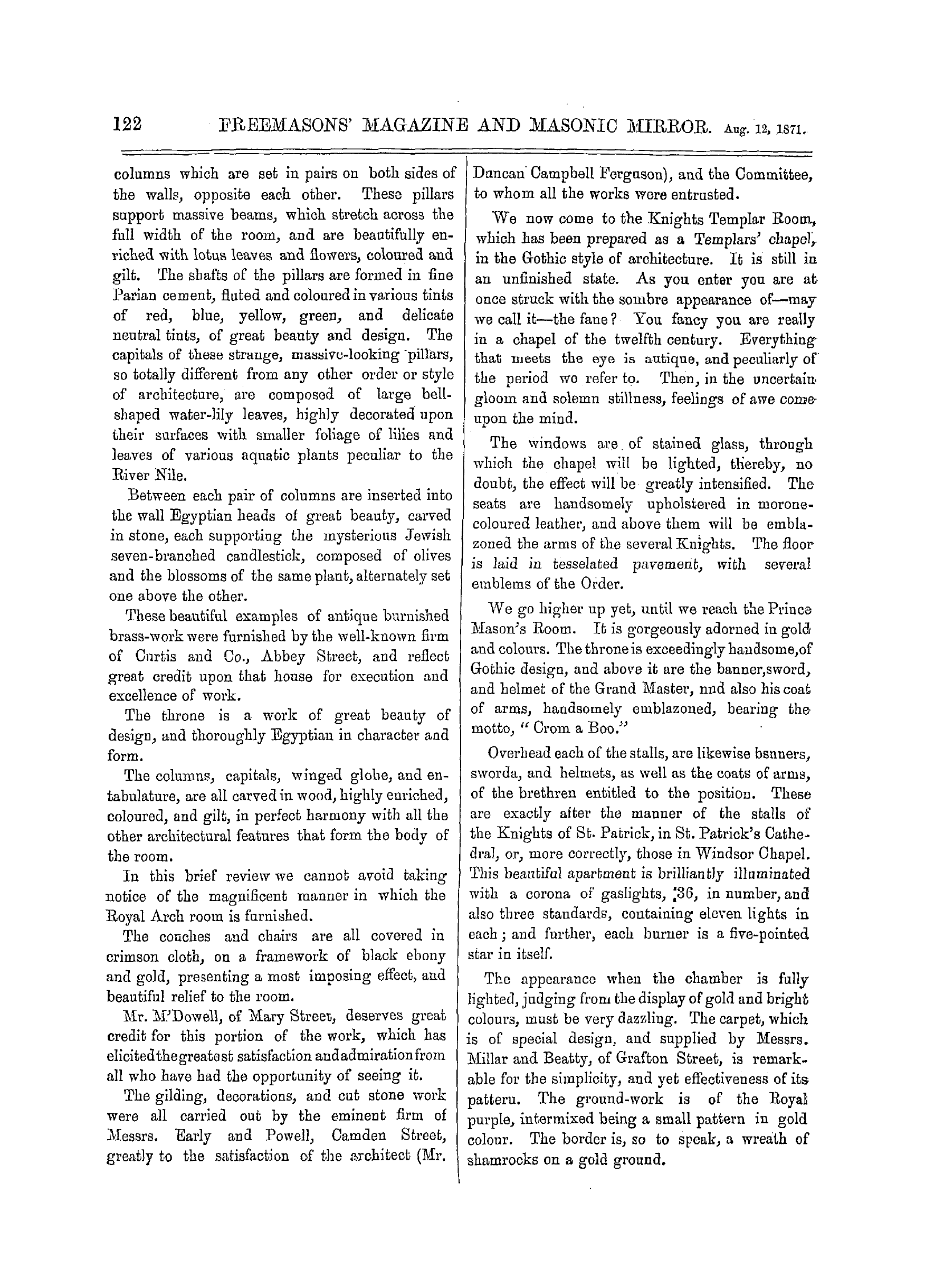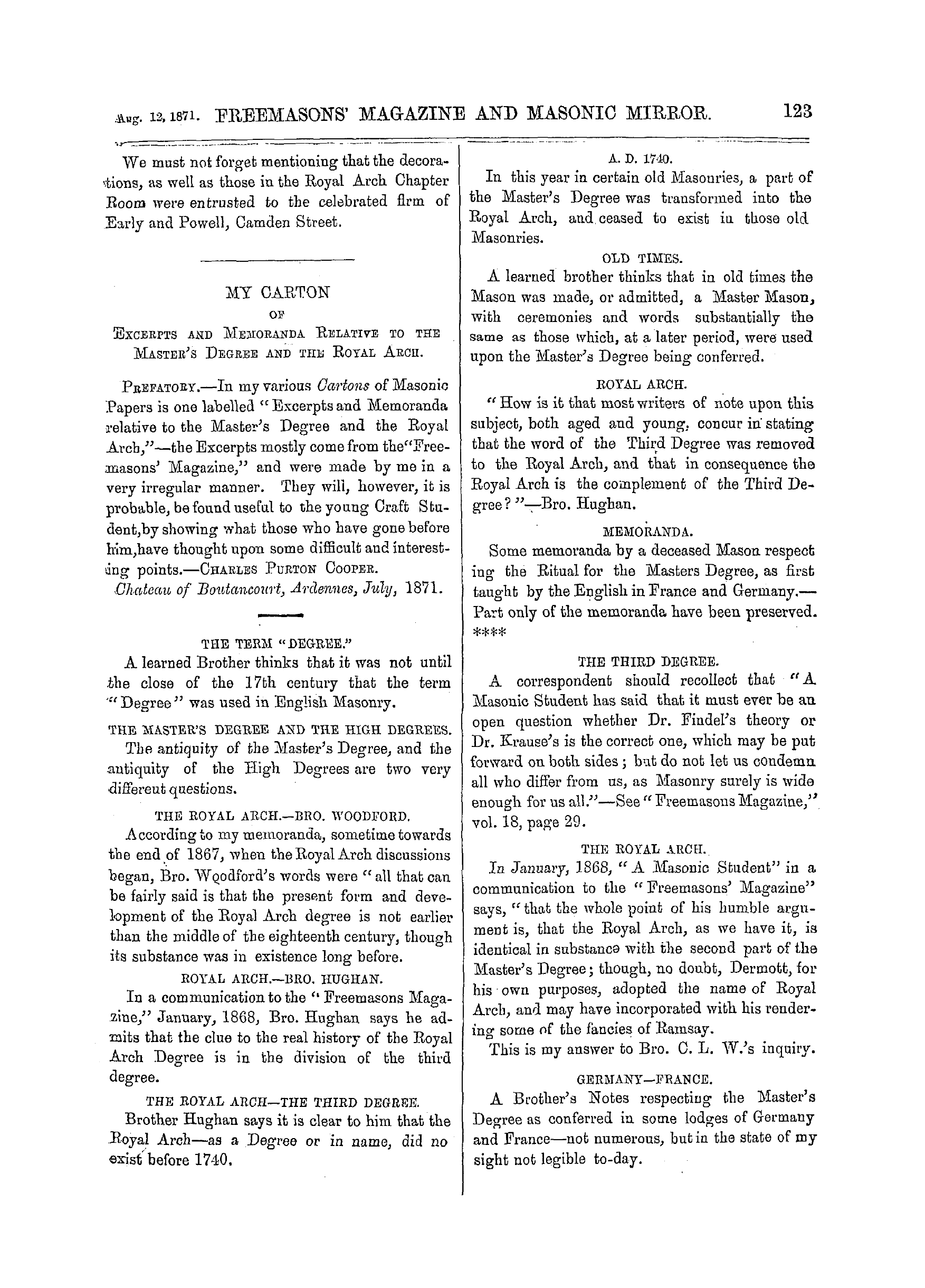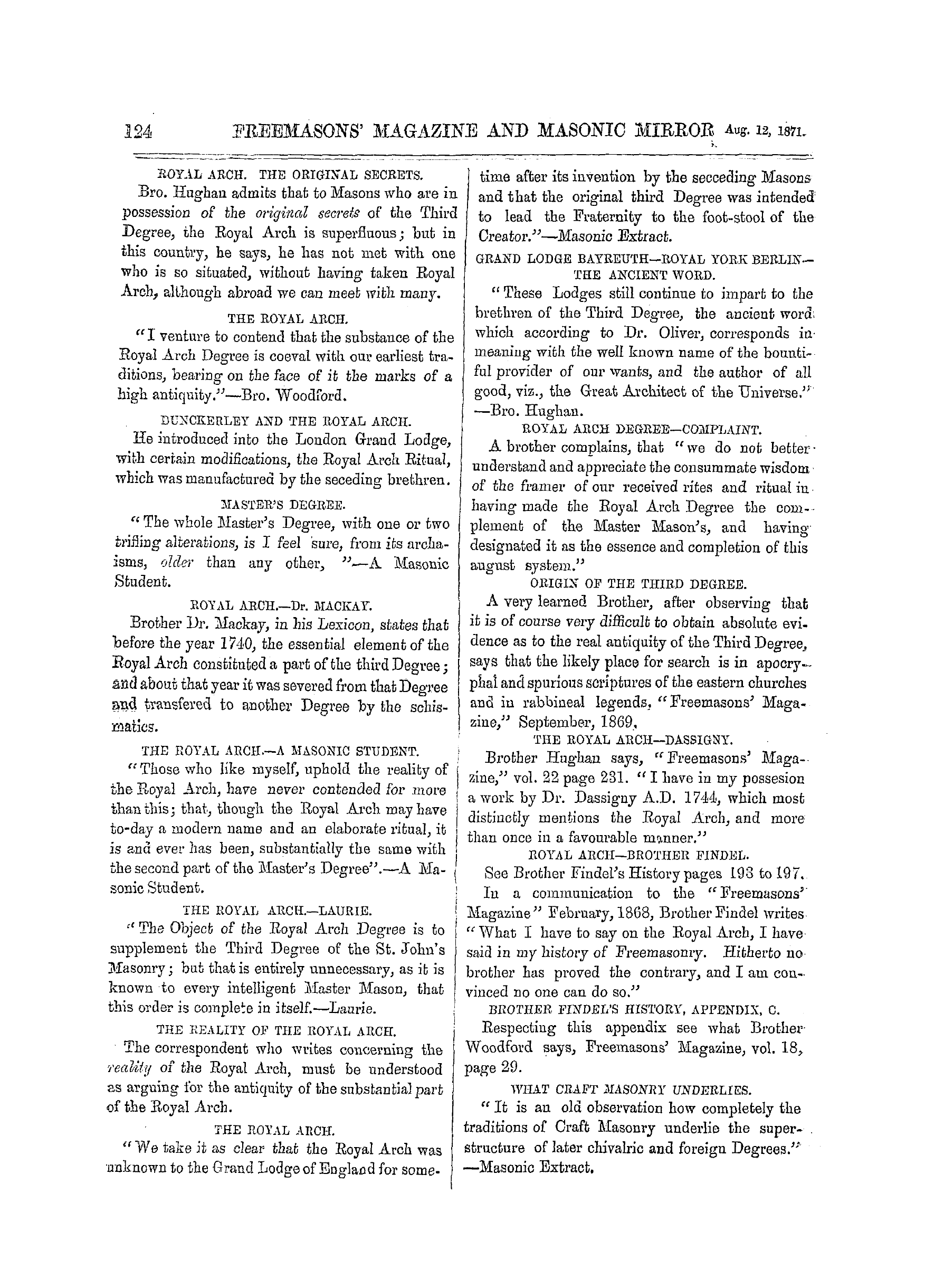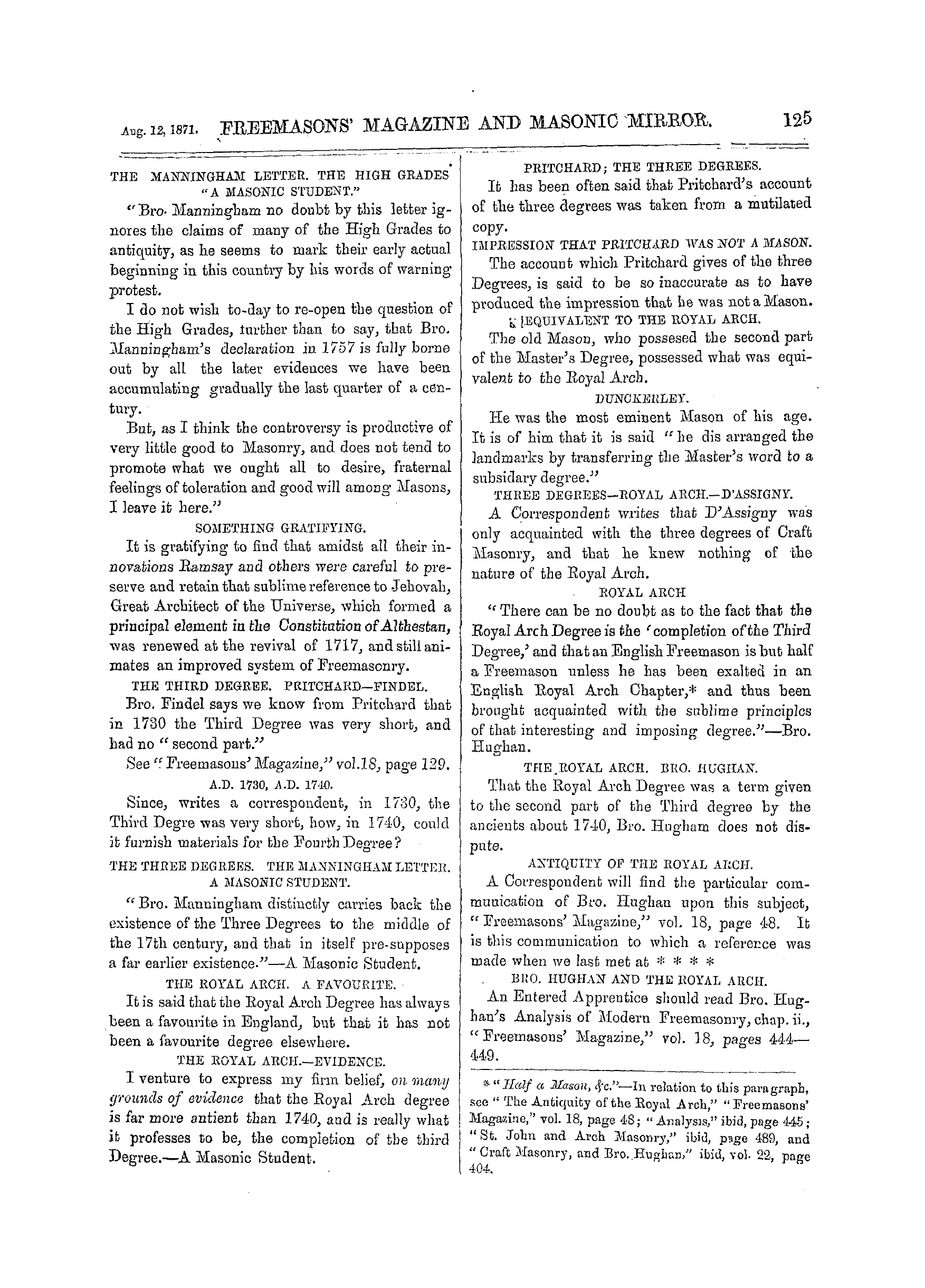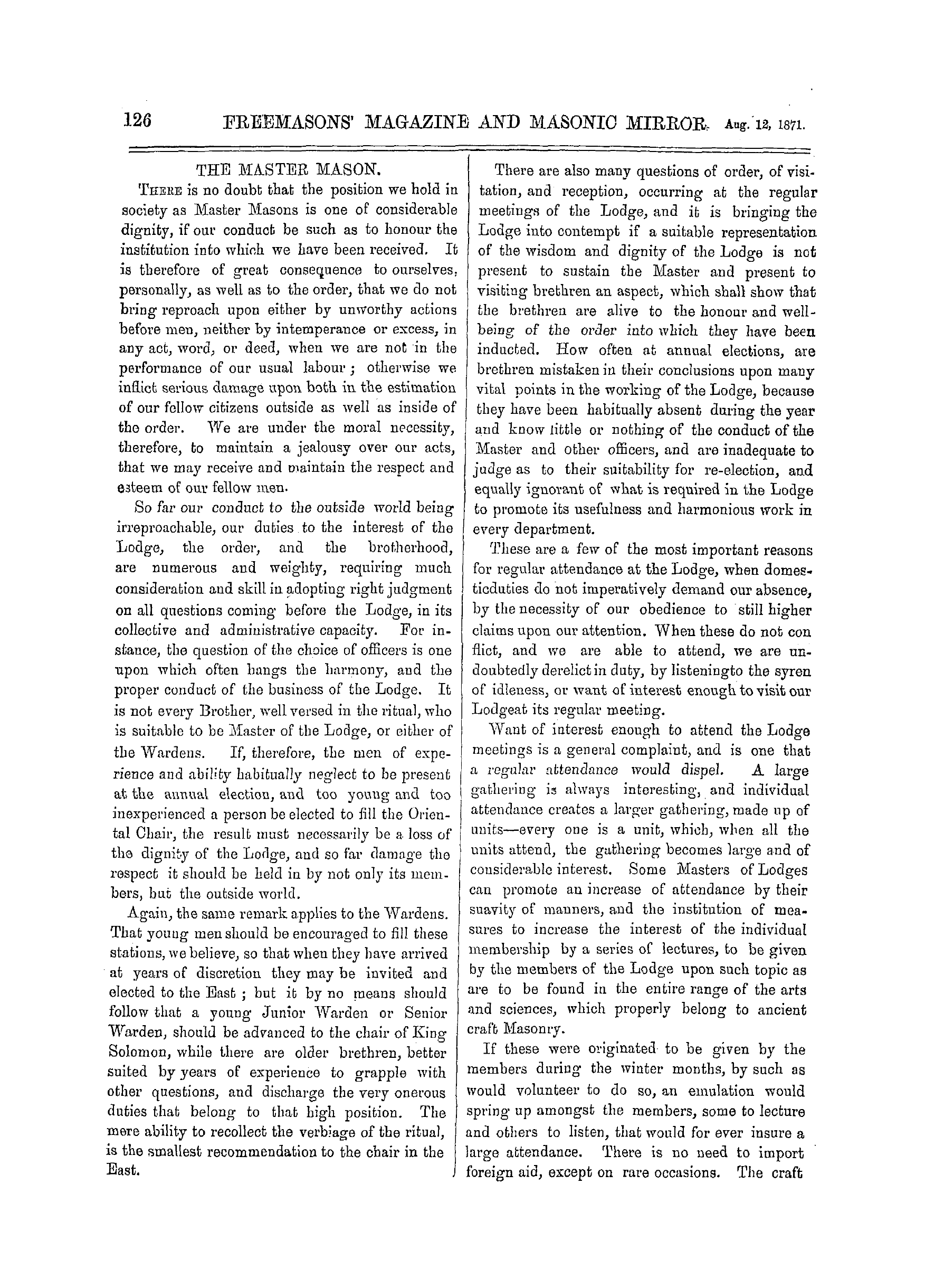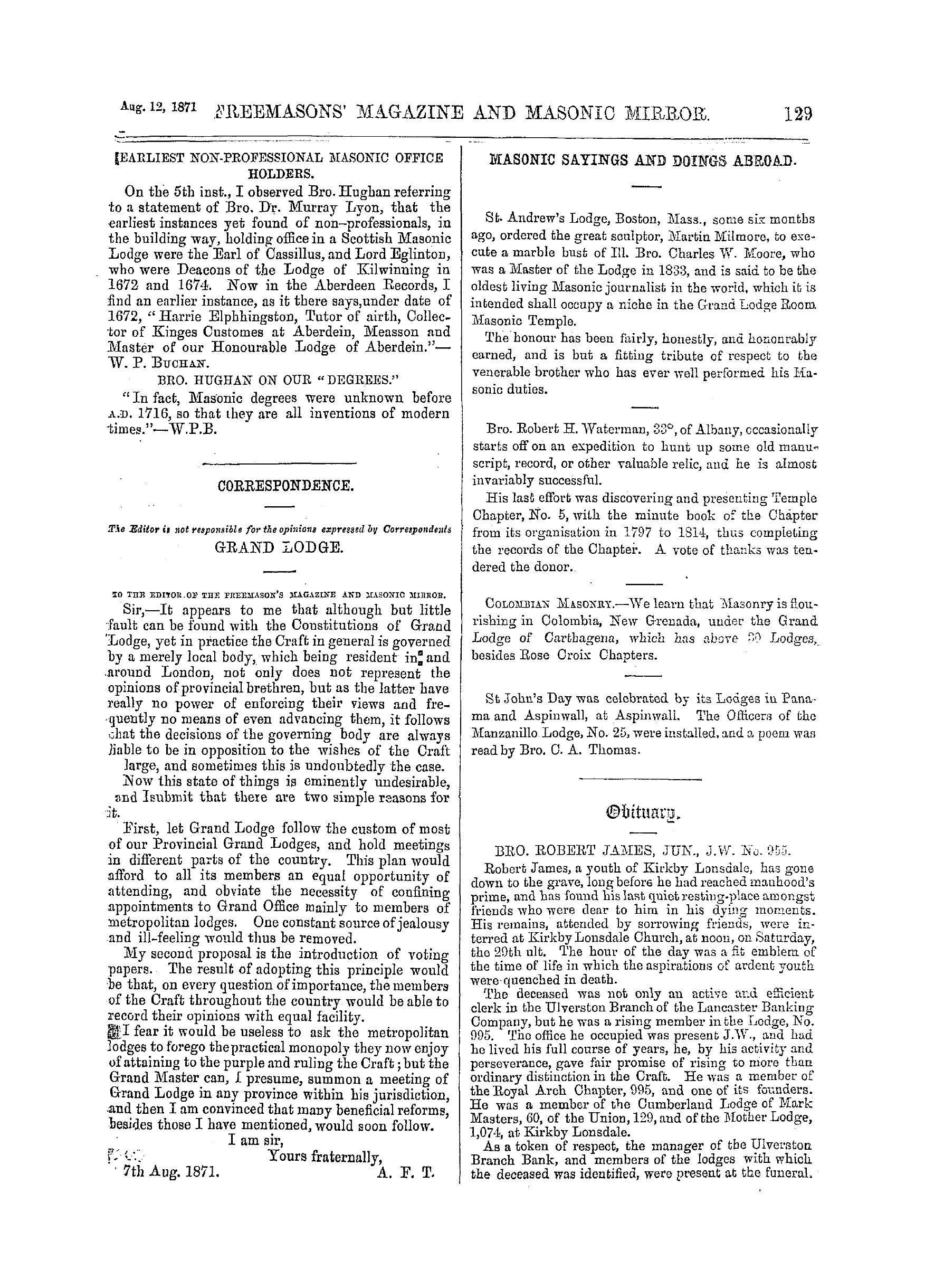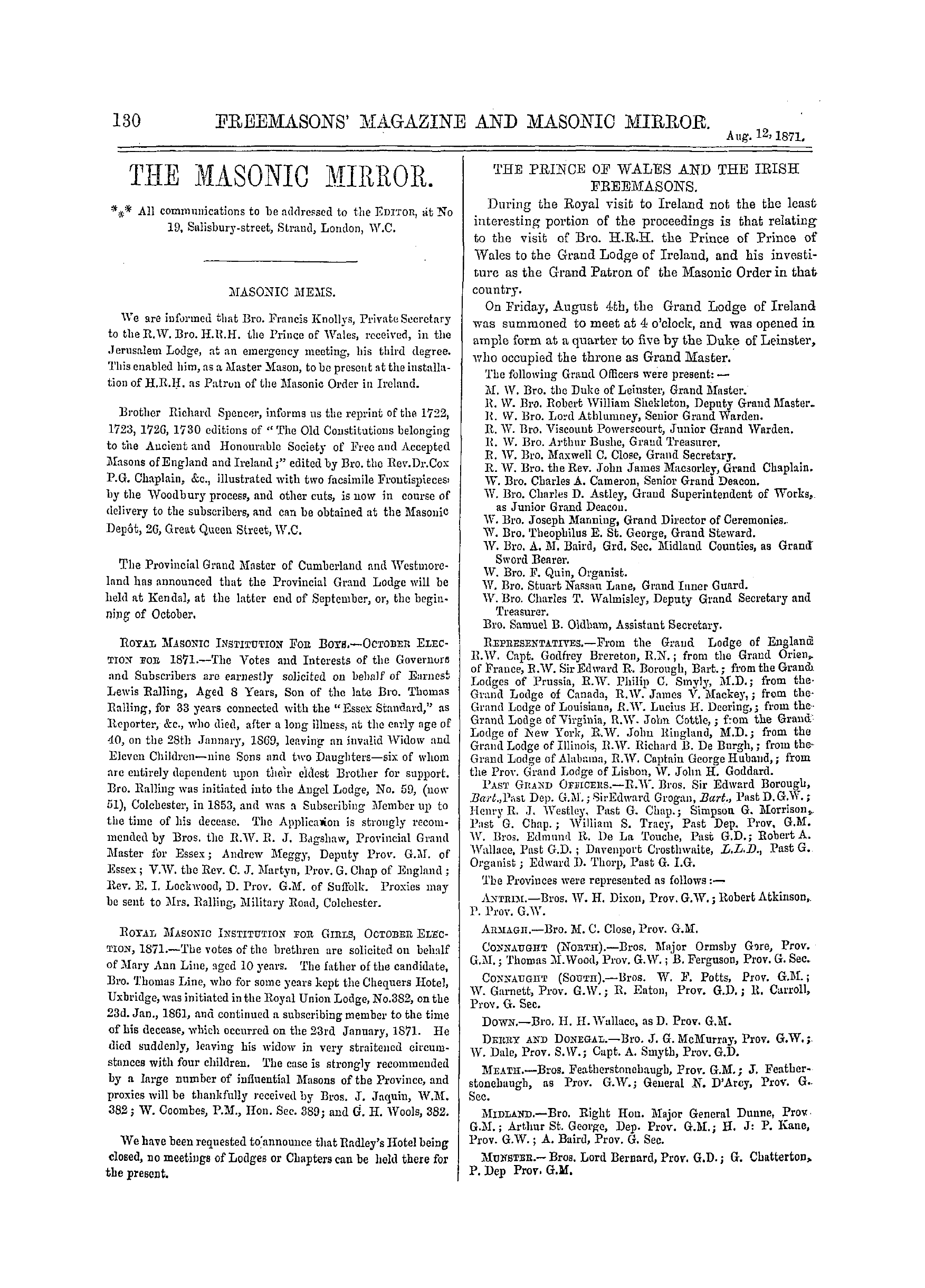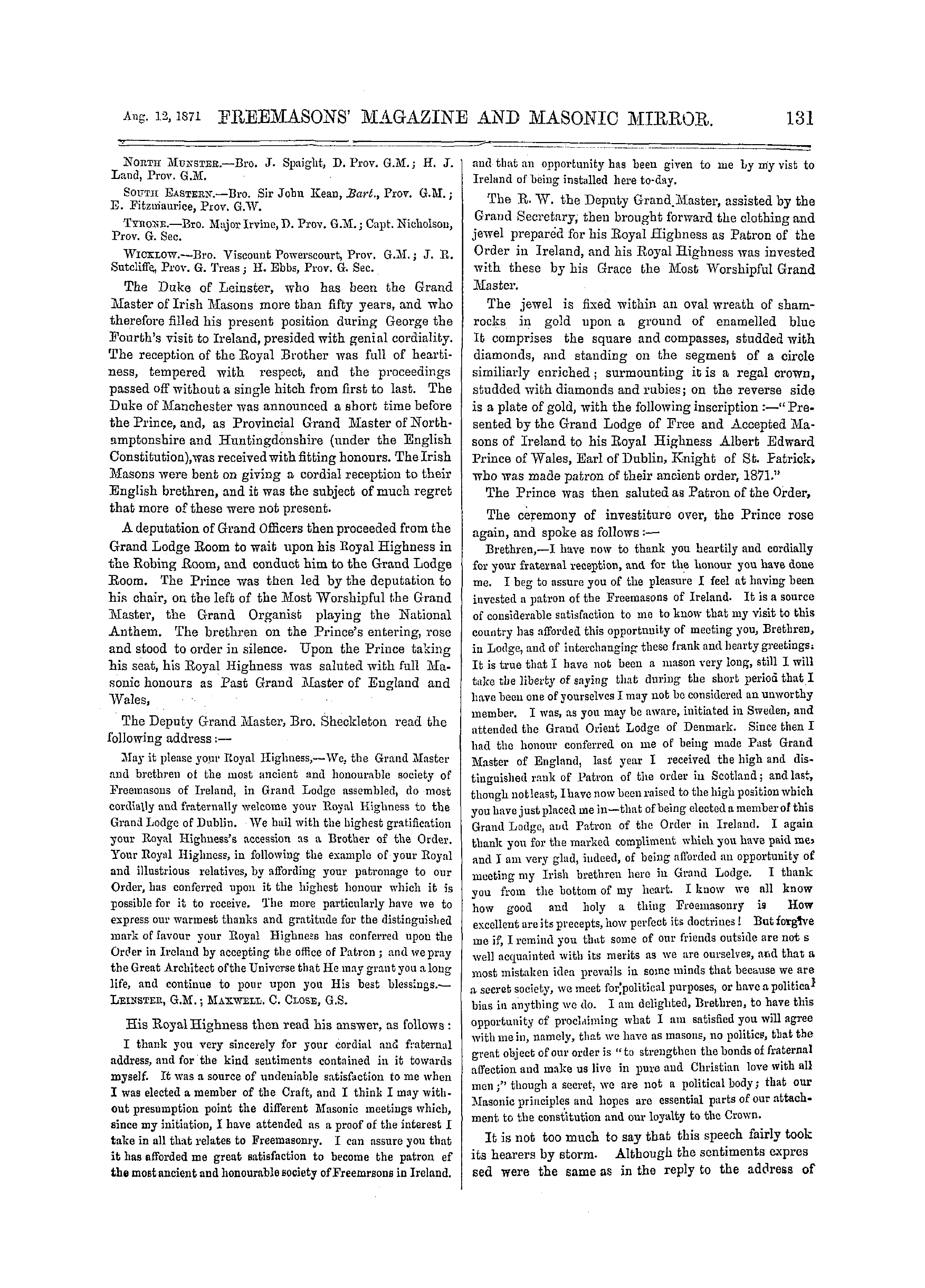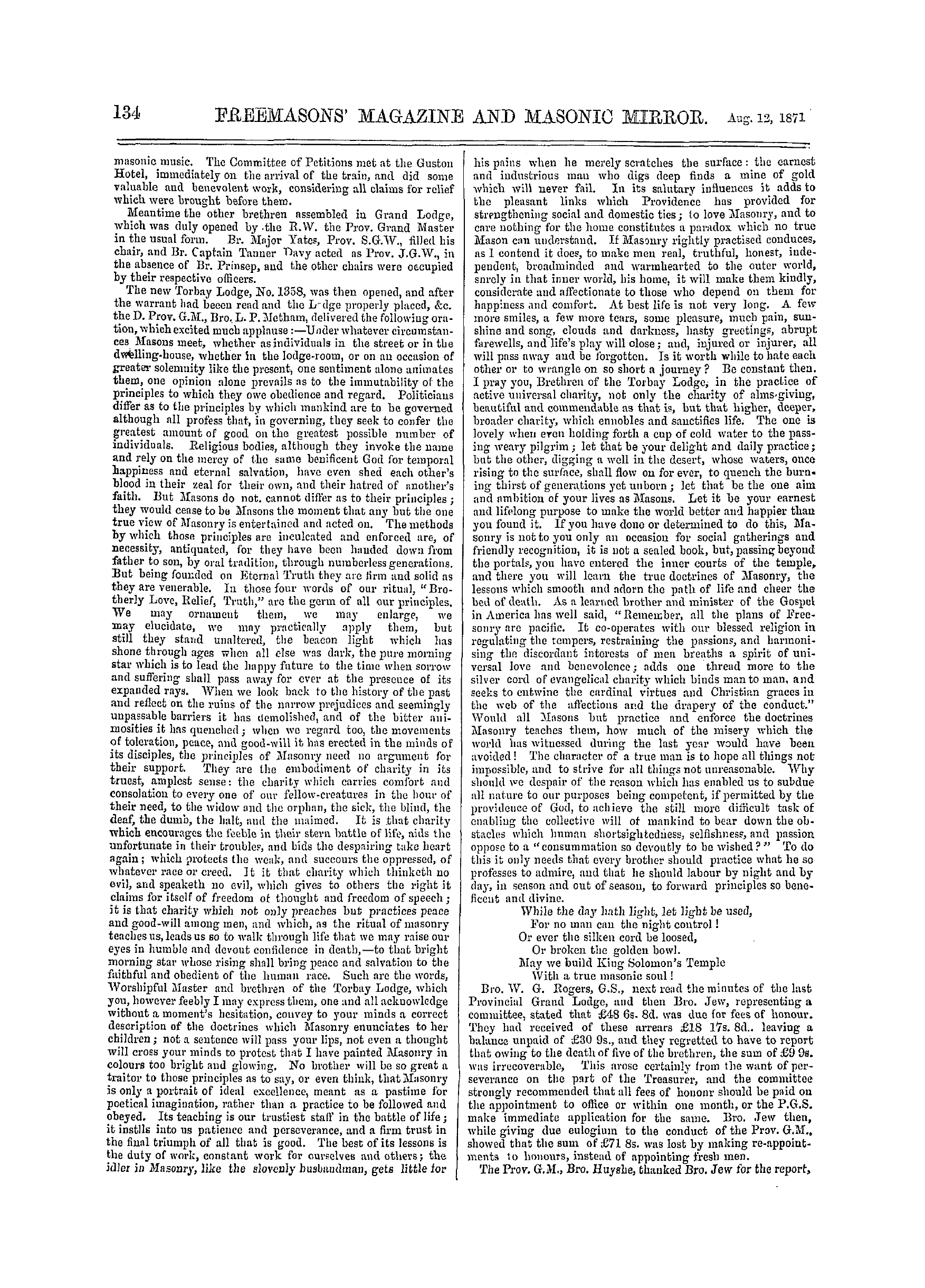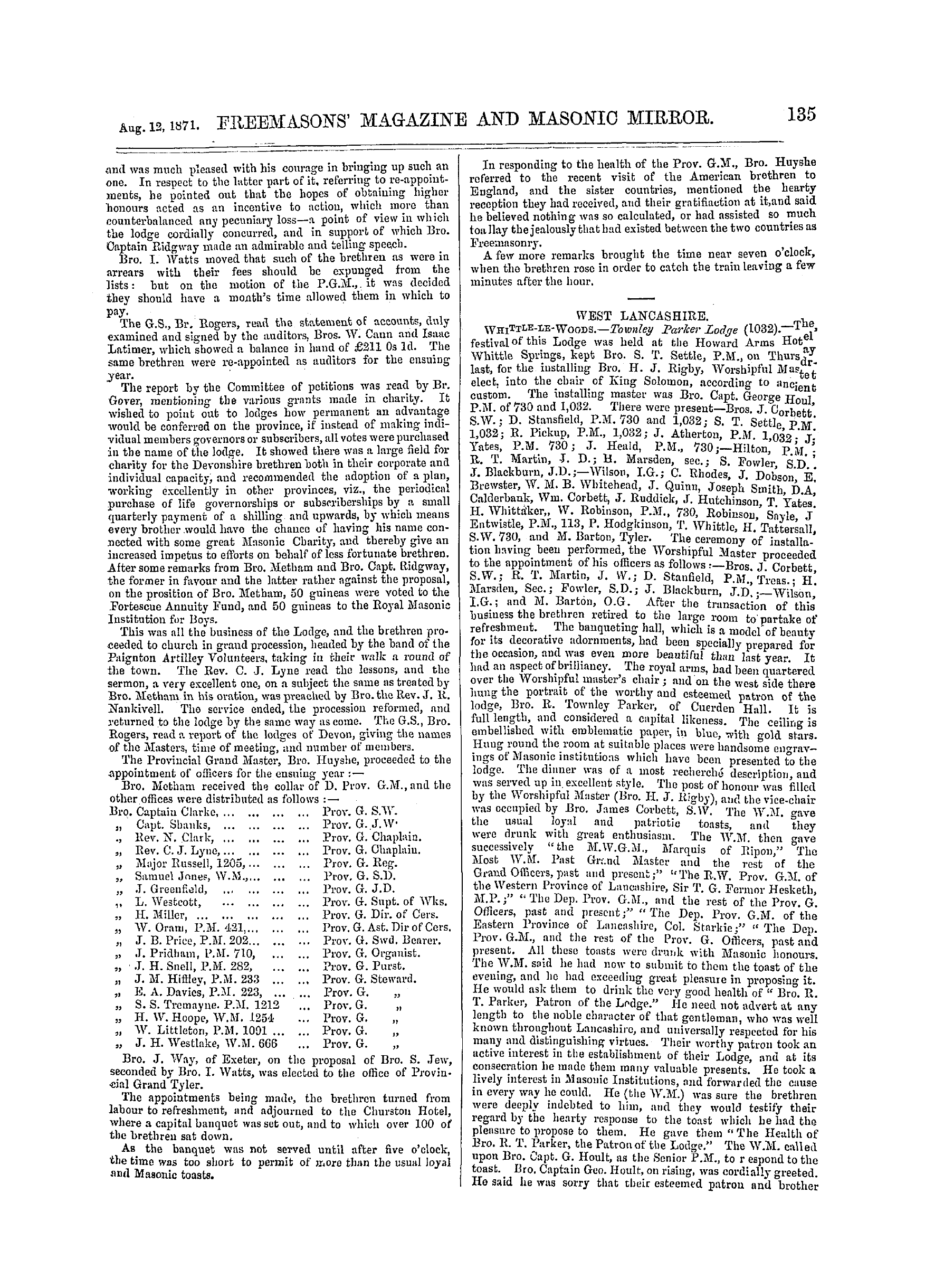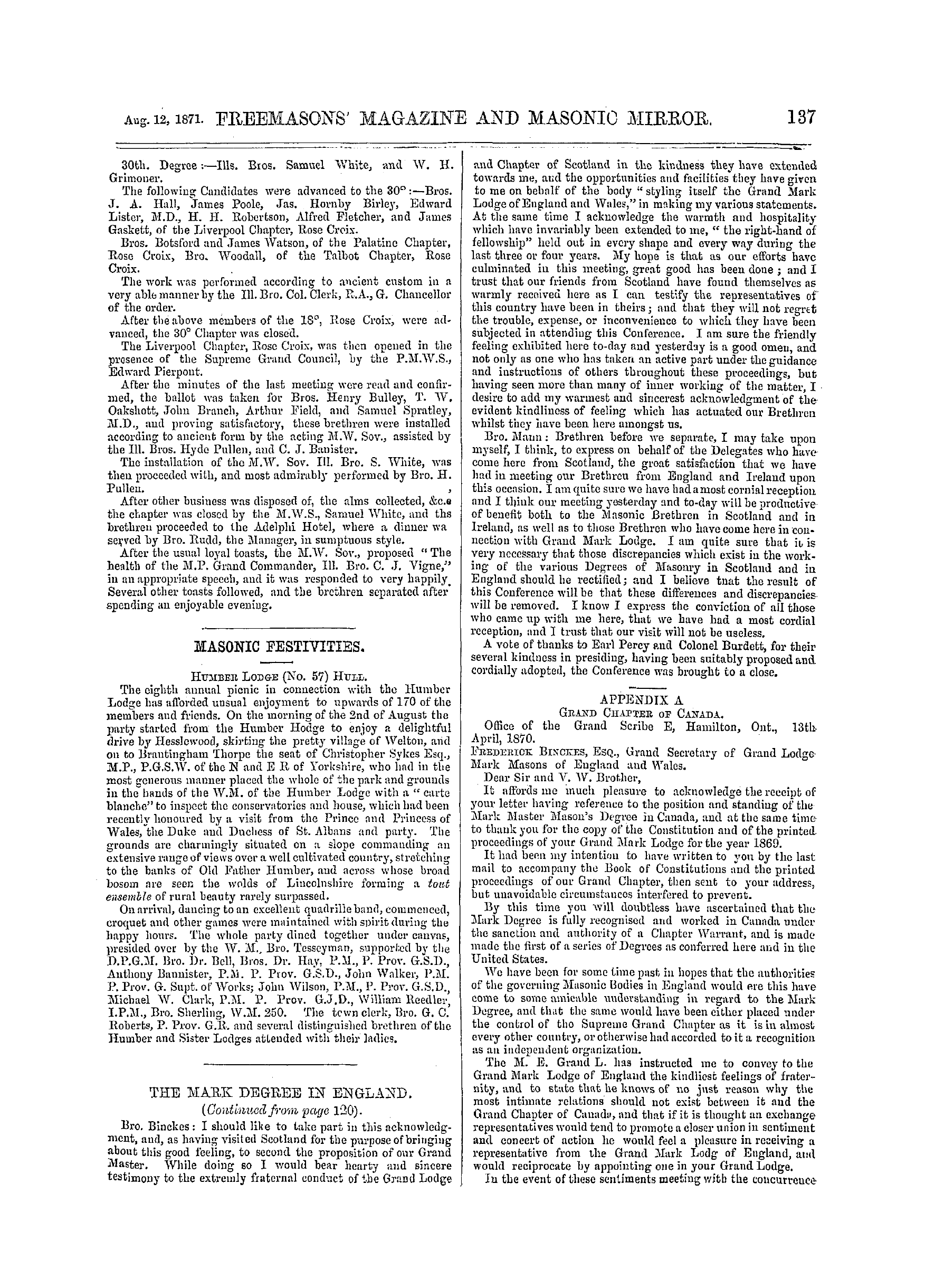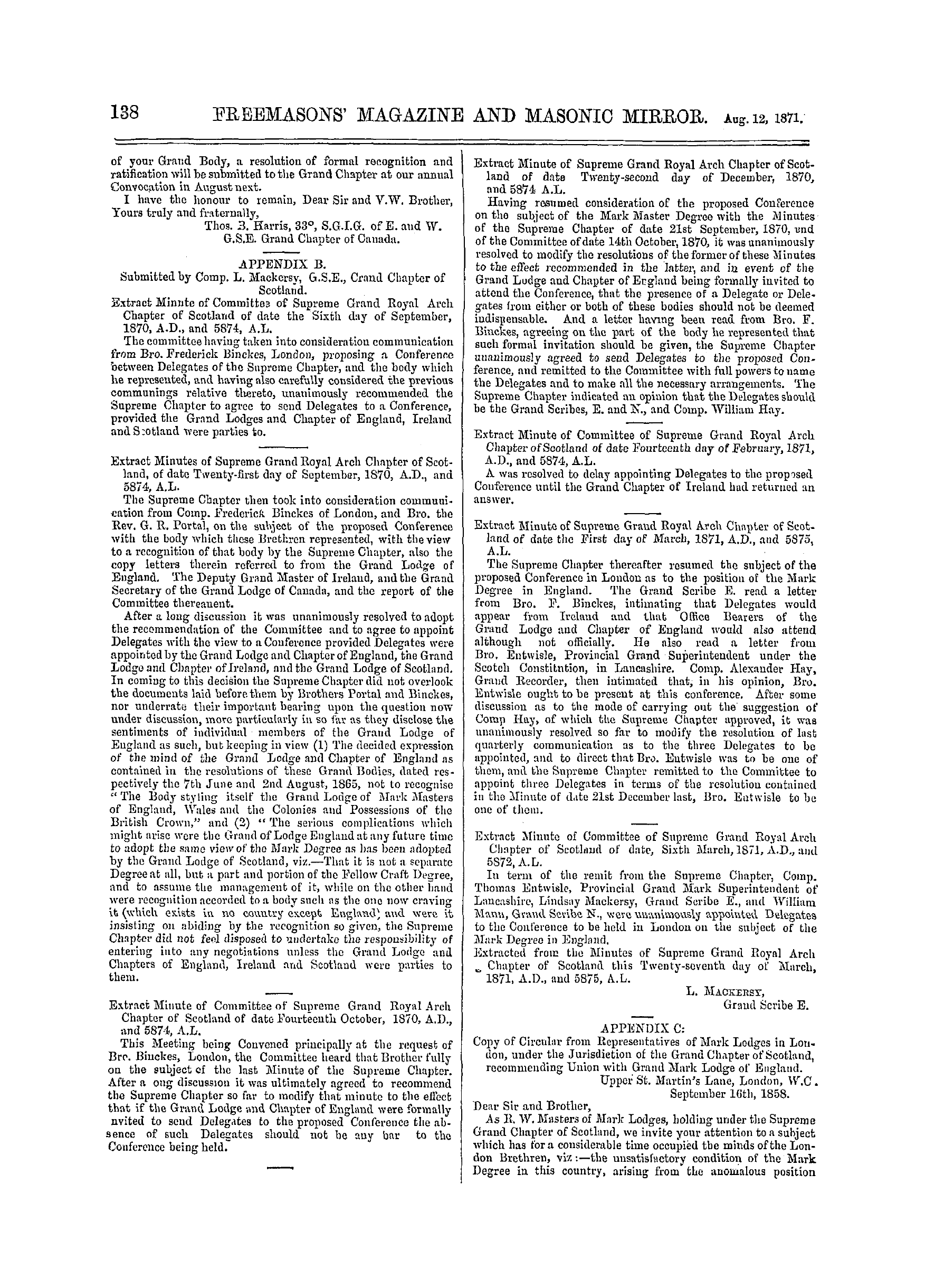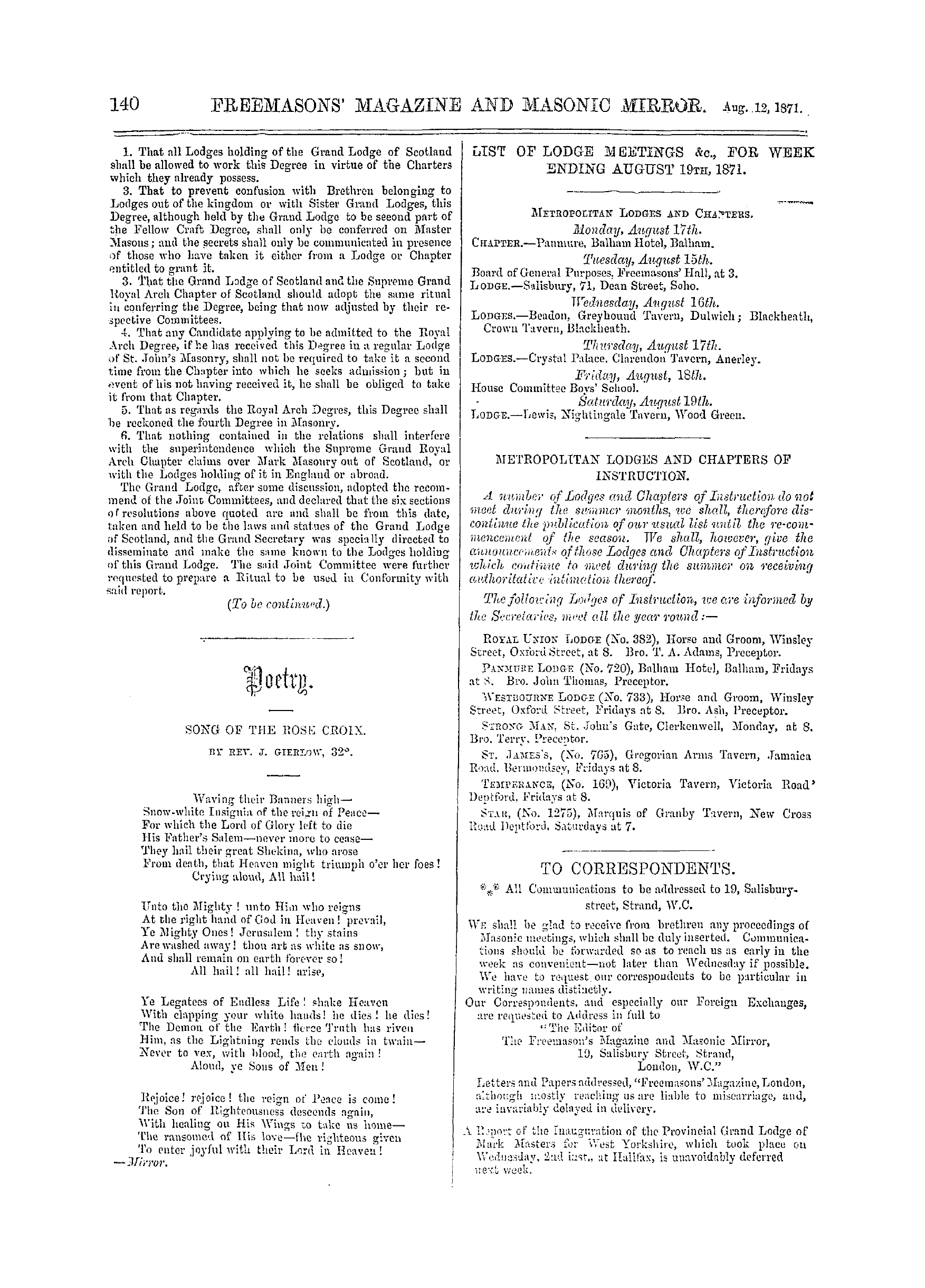Note: This text has been automatically extracted via Optical Character Recognition (OCR) software.
My Carton
THE MANNINGHAM LETTER . THE HIGH GRADES "A MASONIC STUDENT . " " Bro- Manningham no doubt by this letter ignores the claims of many of the High Grades to antiquity , as he seems to mark their early actual beginning in this country by his words of
warningprotest . I do not wish to-day to re-open the question of the High Grades , further than to say , that Bro . Mannicgham ' s declaration in 1757 is fully borne out by all the later evidences we have been
accumulating gradually the last quarter of a century . But , as I think the controversy is productive of very little good to Masonry , and does not tend to promote what we ought all to desire , fraternal feelings of toleration and good will among Masons , I leave it here . "
SOMETHING GRATIFYING . It is gratifying to find that amidst all their innovations Ramsay and others ivere careful to preserve and retain that sublime reference to Jehovah , Great Architect of the Universe , which formed a principal element in the Constitution of AJfchesfcan , was renewed at the revival of 1717 , and still animates an improved system of Freemasonry .
THE THIRD DEGREE . PRITCHARD—FINDEL . Bro . Findel says we knoAV from Pritchard that in 1730 the Third Degree Avas very short , and had no " second part . " See " Freemasons' Magazine , " vol . 18 , page 129 . A . D . 1730 , A . D . 174-0 .
Since , writes a correspondent , in 1730 , the Third Degre was very short , IIOAV , in 1740 , could it furnish materials for the Fourth Degree ?
THE THREE DEGREES . TIIE MANNINGHAM LETTER . A MASONIC STUDENT . " Bro . Manningham distinctly carries back the existence of the Three Degrees to the middle of the 17 th century , and that in itself pre-supposes a far earlier existence . "—A Masonic Student .
THE ROYAL ARCH . A FAVOURITE . It is said that the Eoyal Arch Degree has always been a favourite in England , but that it has not been a favourite degree elsewhere . THE RGY AL ARCH—EVIDENCE .
I venture to express my firm belief , on many (/ rounds of evidence that the Eoyal Arch degree is far more antient than 1740 , and is really what it professes to be , the completion of the third Degree . —A Masonic Student .
PRITCHARD ; THE THREE DEGREES . It has been often said that Pritchard ' s account of the three degrees was taken from a mutilated copy . IMPRESSION THAT PRITCHARD AA ^ AS NOT A MASON . The account which Pritchard gives of the three
Degrees , is said to be so inaccurate as to have produced the impression that he was not a Mason . K [ EQUIVALENT TO THE ROYAL ARCH . The old Mason , who possesed tbe second part of the Master's Degree , possessed what was equivalent to the Eoyal Arch .
DUNC . __ EI . LEY . He was the most eminent Mason of his age . It is of him that it is said "he dis arranged the landmarks by transferring the Master's Avord to a subsidary degree . " THREE DEGREES-ROYAL ARCH .-D'ASSIGNY .
A Correspondent writes that D'Assigny was only acquainted Avith the three degrees of Craft Masonry , and that he kneAV nothing of the nature of the Eoyal Arch .
ROYAL ARCH " There can be no doubt as to the fact that the Eoyal Arch Degree is the ' completion ofthe Third Degree , ' and that an English Freemason is but half a Freemason unless he has been exalted in an English Royal Arch Chapter , * and thus been
brought acquainted with the sublime principles of that interesting and imposing degree . "—Bro . Hughan .
. ROYAL ARCH . BRO . HUGHAN . That the Royal Arch Degree Avas a term given to the second part of the Third degree by the ancients about 1740 , Bro . Hugham does not dispute . ANTIQUITY OF THE ROYAL ARCH .
A Correspondent will find the particular communication of Bro . Hughan upon this subject , " Freemasons'Magazine , " vol . 18 , page 48 . It is this communication to which a reference was made Avhen Ave last met at * * * *
BRO . HUGHAN AND THE ROYAL ARCH . An Entered Apprentice should read Bro . Hughan ' s Analysis of Modern Freemasonry , chap , ii ., "Freemasons' Magazine , " vol . 18 , pao-es 444—449 .
Note: This text has been automatically extracted via Optical Character Recognition (OCR) software.
My Carton
THE MANNINGHAM LETTER . THE HIGH GRADES "A MASONIC STUDENT . " " Bro- Manningham no doubt by this letter ignores the claims of many of the High Grades to antiquity , as he seems to mark their early actual beginning in this country by his words of
warningprotest . I do not wish to-day to re-open the question of the High Grades , further than to say , that Bro . Mannicgham ' s declaration in 1757 is fully borne out by all the later evidences we have been
accumulating gradually the last quarter of a century . But , as I think the controversy is productive of very little good to Masonry , and does not tend to promote what we ought all to desire , fraternal feelings of toleration and good will among Masons , I leave it here . "
SOMETHING GRATIFYING . It is gratifying to find that amidst all their innovations Ramsay and others ivere careful to preserve and retain that sublime reference to Jehovah , Great Architect of the Universe , which formed a principal element in the Constitution of AJfchesfcan , was renewed at the revival of 1717 , and still animates an improved system of Freemasonry .
THE THIRD DEGREE . PRITCHARD—FINDEL . Bro . Findel says we knoAV from Pritchard that in 1730 the Third Degree Avas very short , and had no " second part . " See " Freemasons' Magazine , " vol . 18 , page 129 . A . D . 1730 , A . D . 174-0 .
Since , writes a correspondent , in 1730 , the Third Degre was very short , IIOAV , in 1740 , could it furnish materials for the Fourth Degree ?
THE THREE DEGREES . TIIE MANNINGHAM LETTER . A MASONIC STUDENT . " Bro . Manningham distinctly carries back the existence of the Three Degrees to the middle of the 17 th century , and that in itself pre-supposes a far earlier existence . "—A Masonic Student .
THE ROYAL ARCH . A FAVOURITE . It is said that the Eoyal Arch Degree has always been a favourite in England , but that it has not been a favourite degree elsewhere . THE RGY AL ARCH—EVIDENCE .
I venture to express my firm belief , on many (/ rounds of evidence that the Eoyal Arch degree is far more antient than 1740 , and is really what it professes to be , the completion of the third Degree . —A Masonic Student .
PRITCHARD ; THE THREE DEGREES . It has been often said that Pritchard ' s account of the three degrees was taken from a mutilated copy . IMPRESSION THAT PRITCHARD AA ^ AS NOT A MASON . The account which Pritchard gives of the three
Degrees , is said to be so inaccurate as to have produced the impression that he was not a Mason . K [ EQUIVALENT TO THE ROYAL ARCH . The old Mason , who possesed tbe second part of the Master's Degree , possessed what was equivalent to the Eoyal Arch .
DUNC . __ EI . LEY . He was the most eminent Mason of his age . It is of him that it is said "he dis arranged the landmarks by transferring the Master's Avord to a subsidary degree . " THREE DEGREES-ROYAL ARCH .-D'ASSIGNY .
A Correspondent writes that D'Assigny was only acquainted Avith the three degrees of Craft Masonry , and that he kneAV nothing of the nature of the Eoyal Arch .
ROYAL ARCH " There can be no doubt as to the fact that the Eoyal Arch Degree is the ' completion ofthe Third Degree , ' and that an English Freemason is but half a Freemason unless he has been exalted in an English Royal Arch Chapter , * and thus been
brought acquainted with the sublime principles of that interesting and imposing degree . "—Bro . Hughan .
. ROYAL ARCH . BRO . HUGHAN . That the Royal Arch Degree Avas a term given to the second part of the Third degree by the ancients about 1740 , Bro . Hugham does not dispute . ANTIQUITY OF THE ROYAL ARCH .
A Correspondent will find the particular communication of Bro . Hughan upon this subject , " Freemasons'Magazine , " vol . 18 , page 48 . It is this communication to which a reference was made Avhen Ave last met at * * * *
BRO . HUGHAN AND THE ROYAL ARCH . An Entered Apprentice should read Bro . Hughan ' s Analysis of Modern Freemasonry , chap , ii ., "Freemasons' Magazine , " vol . 18 , pao-es 444—449 .
